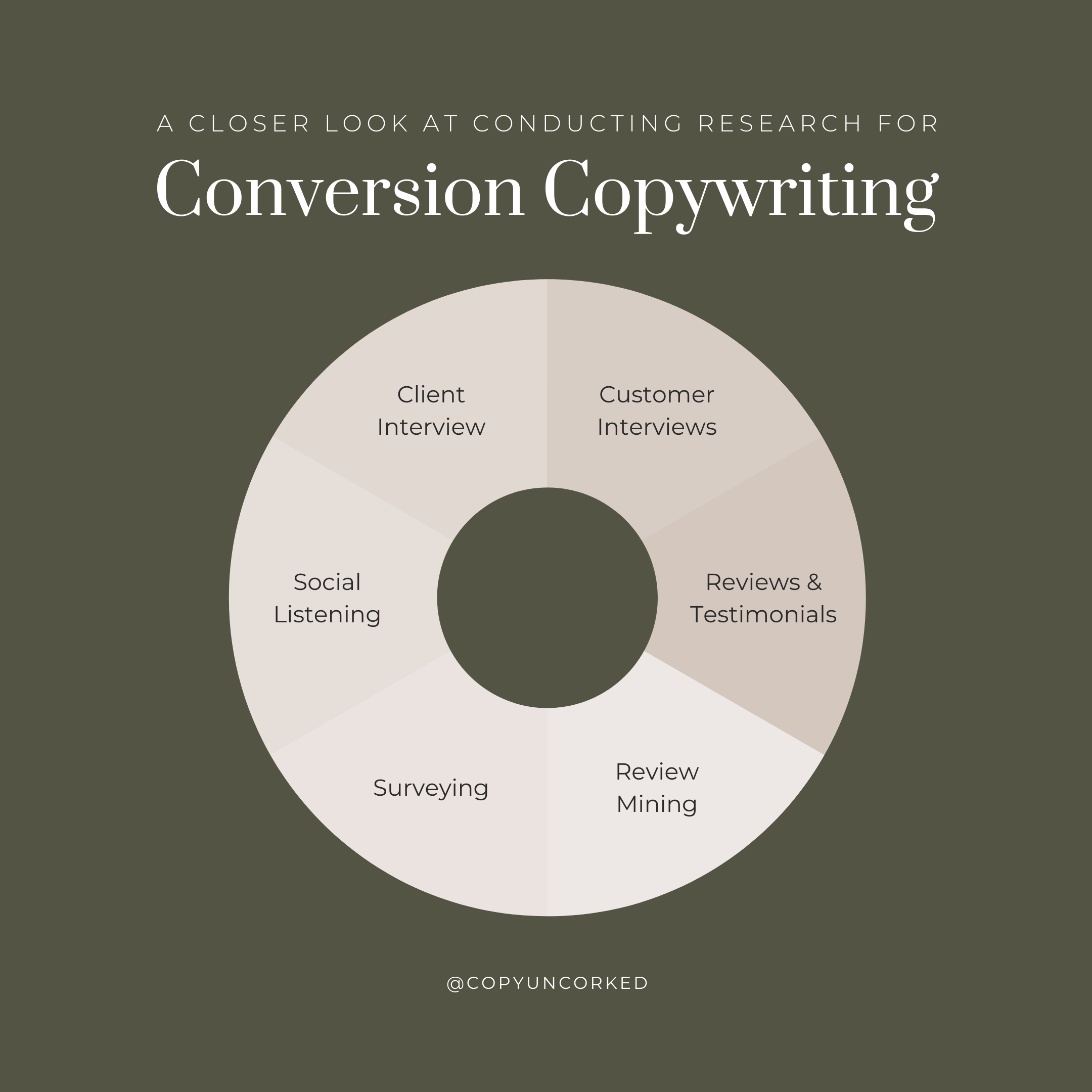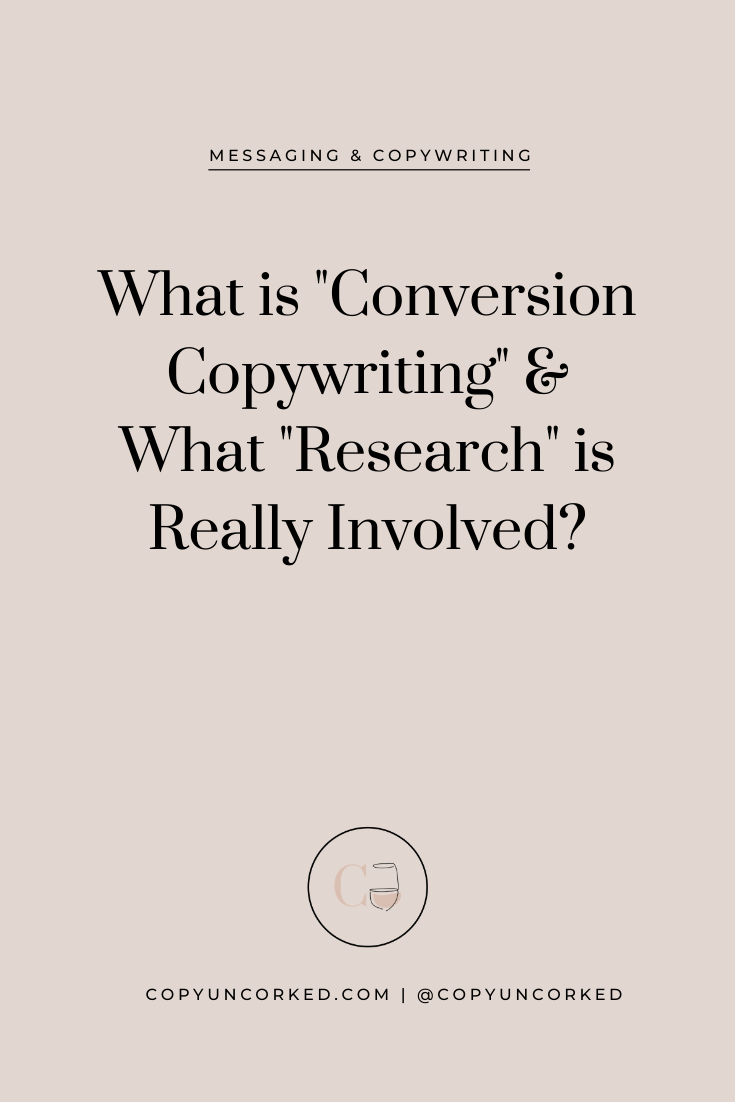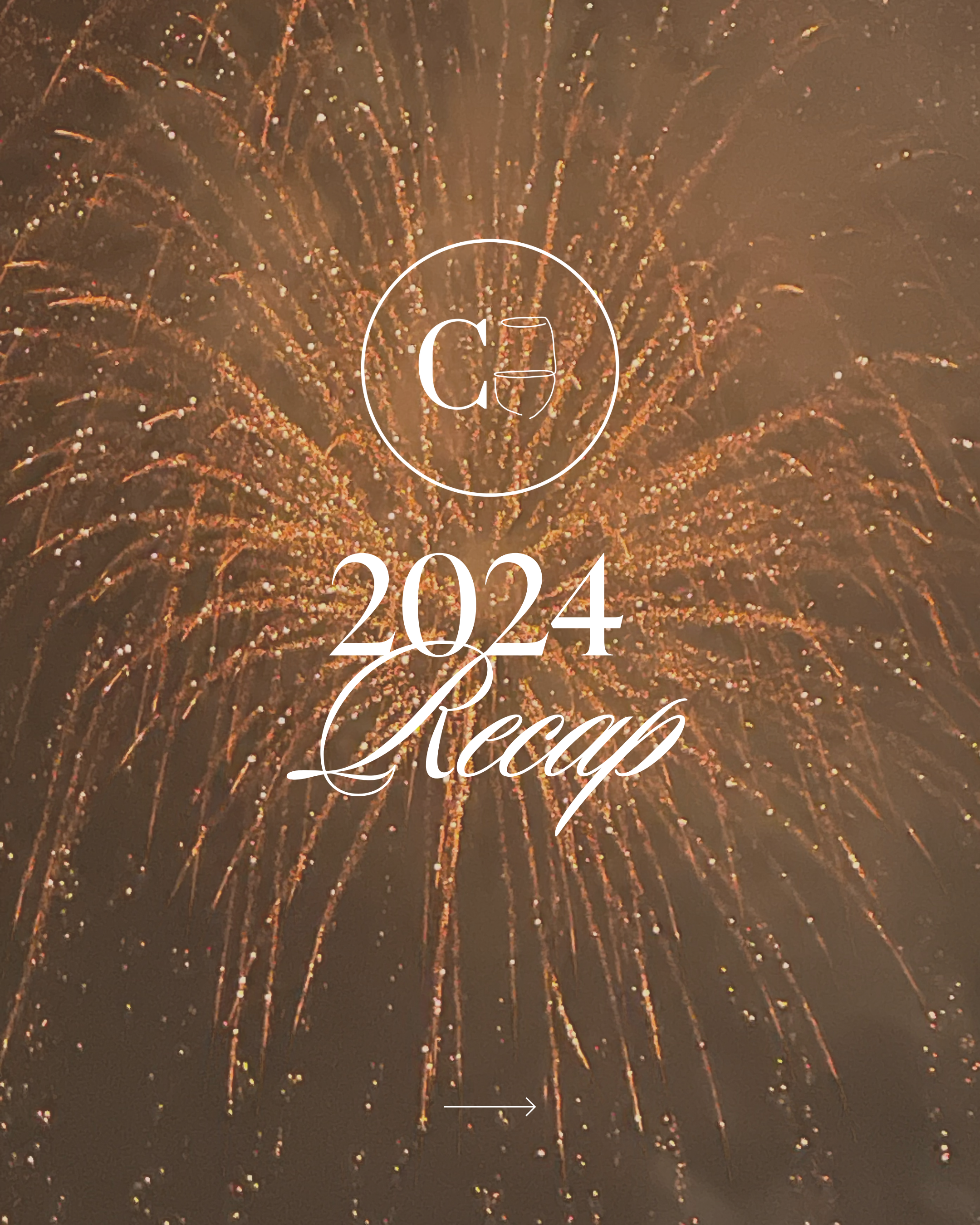Spend much time in this online marketing world and there’s a somewhat perplexing term you’ll eventually hear. That term is “conversion copywriting”.
Originally coined by the copy wizard, Joanna Wiebe of Copyhackers, this form of copywriting is focused on getting readers to take the next best action. (Think sales.)
Whether you’re a fellow copywriter, current client, past client, prospective client, or friend, I’m here to give you the 411 on:
- What it means
- What type of research is needed
- Whether I consider Copy Uncorked a “conversion copywriting” studio
- How we apply it to our process
For the sake of providing a definition – here’s how Copyhackers describes it:
“Conversion copywriting is copy that moves the reader to “yes” using voice-of-customer data, frameworks, formulas and proven persuasion techniques.
Conversion copywriting motivates people to act & make a decision; takes the voice, tone and finding a unique value proposition and combines it with conversion (motivating) and process (research component) and presentation (what you’re saying and how you’re saying it).”
I love this. That being said, I don’t get too hung up on putting an adjective in front of ‘copywriting’ across all of our channels. Simply because Copy Uncorked is always striving to achieve the best possible results for clients (based on their needs) and digging into the necessary research to do it.
Technically you could say we’re a “conversion copywriting” studio, but as you know if you’ve been around here for more than a hot minute, we also really care about the brand messaging, strategy & design side of things. We love creating concept or “themed” brands with a focus on creativity, wit, and innovation.
“Brand copywriting” tends to rely on a lot of storytelling and personality. (It also tends to be a good approach for high-end, luxury brands.)
So we could also easily land in the “brand” or “creative” copywriting category. And I think those titles are super important too.
You see, great copy doesn’t work in isolation. It works together and is based on a whole number of factors – like the perception of the business (its reputation), the list or audience size, prior copy/content that’s been communicated, the visual presentation of the brand, and of course, the offer / “product” that’s being sold.
Then there’s “SEO Copywriting” which is also important but largely focused on growing traffic and being search-engine friendly. A lot of it is based on keywords and viewership data. Whereas conversion copywriting is more focused on conversions – in the form of opt-ins, sign-ups, and sales.
In short: We are conversion copywriting advocates and the research required to write conversion-driven copy is baked into our process. But I wouldn’t get mad if you referred to me as a “brand copywriter” or a “creative copywriter” because we take that into account, too.
All of that being said, the term “conversion copywriting” is the most comprehensive and aligned to the work we do.
Regardless of terminology, our goal is to create clarity – not only for you as the business owner – but for your audience, right from the very first headline. And in order for words to “click” and “connect” with your audience enough to make them take action, it requires research. Trust me, it certainly doesn’t happen by accident!
So let’s take a closer look at conducting research for conversion copywriting and what all it entails.

It can include:
01 – Client Interview
For us, and like most service-providers, this starts with a detailed client questionnaire. We use it to examine our client’s voice, desires, and preferences, as well as attempt to start extracting their core message. Then we get into even more detail during a 1+ hour Zoom call.
During that interview, we dig more into target audience, competitors or existing industry landscape, products / services, etc. We do all the note-taking during these calls and want the client to just focus on freely communicating. So much gold comes from these conversations without them even really realizing it!
I’m big on understanding the client’s perspective – their way of viewing the world – and why they decided to fire up shop in the first place. This alone is a critical differentiator of theirs!
02 – Customer Interviews
Depending on the client, we then conduct a number of interviews to hear from our client’s customers / clients. These give us deeper insight into their pain points, needs, and desires – while understanding the language they use to describe it.
I love a quote by Blair Warren that says, “People will do anything for those who: encourage their dreams, justify their failures, allay their fears, confirm their suspicions, and help throw rocks at their enemies.”
Customer interviews can help us better understand what all of ^those things are.
03 – Customer Reviews & Testimonials
Same idea here as the customer interviews. Reviews and testimonials not only boost credibility when you strategically place them throughout your website or sales page, but we’re also using them to look for “sticky” words and phrases that seem to best encapsulate what the brand has to offer.
For example, we worked with a wedding makeup artist and almost every single one of her testimonials used the word “flawless” to describe the way they felt about their bridal glow up. So you better believe that was an adjective we used front & center in her website copy!
04 – Review Mining
If you’re like wait, “Didn’t you already mention Reviews?” the answer is yes and no. Sometimes newer clients don’t have many (if any) customer reviews – or they’re just not all that detailed. Or perhaps we’re just wanting to get a broader feel for what people have said about similar products/services.
This is when you could look at things like Amazon or Google Reviews or Yelp – or whatever seems to be most relevant. We’re looking for what people loved, what they felt was missing, how they felt before using the product/service, and how they felt after.
Again, this is all valuable “data” that gives us direction to write copy that communicates the specific results or transformation a specific audience is looking for.
05 – Surveying
This is one of my favorites and we have a whole post about it here. When clients have a decent-sized audience, we encourage them to run surveys using a tool like Typeform, or even conduct simple polls on social media. It doesn’t have to be overly complicated but can be surprisingly revealing. That was the case when working on the brand messaging and website copy for Raised Good.
Surveying ultimately allowed us to create messaging that felt aligned and desired by her audience.
06 – Social Listening
This is another great one that’s relatively easy since so many of us spend SO much time on social media already.
You can look at comments and question replies on people’s Stories, you can search for various topics in Facebook Groups (i.e. for our own brand we could search “copywriting” in a design-focused Facebook Group we’re in to see what people’s needs are).
—
This is all ultimately known as “voice-of-customer” data and is part of creating that “Wow, how did you know!?” feeling you get when you read a really great piece of copywriting. It helps to eradicate generic, cookie-cutter, boring copy and replaces it with words that feel energetic, specific, and truthful.
It’s not some sketchy or slimy tactic either, because the idea is to intently listen with empathy and a genuine desire to serve.
After all, you can’t effectively solve someone’s problem, need, or desire if you don’t accurately understand what that problem, need, or desire is in the first place.
Truthfully, these 6 strategies aren’t the only forms of research conversion copywriters do either! A lot of it also entails looking through performance data and metrics from past launches, reviewing the existing copy (known as “the control”), combing through other content, general subject matter research…the list goes on.
So much goes into conversion copywriting including this non-exhaustive list (also from Copyhackers):
-
UX, Interaction Design & Human Factors
-
Voice of Customer Research
-
SEO
-
Voice Development
-
Message Mining
-
Direct Response Framework
-
Creative Advertising
-
Value Proposition Development
-
Tested Copy Formula
-
Audits
-
CRO
-
Messaging Development
-
Data Analysis
-
Persuasion & Human Decision Making
Doing all of this is obviously the ideal, but each part of it isn’t always relevant or available to do for every client. (Sometimes even just based on package selection or budget alone!) So we use our best judgment to be as thorough as possible to achieve results.
I could definitely keep going on this topic but for the sake of brevity, I’ll stop here for now. What other questions do you have? What else do you want to know? I can always write a Part 2… 😉


Read the Comments +
-
[…] We tend to lean toward the brand/creative copywriting side – since the very notion of a ‘brand’ is my first love – while applying conversion copywriting principles. We sort of meet somewhere in the middle. Learn more about what conversion copywriting is and what research is involved here. […]





[…] We tend to lean toward the brand/creative copywriting side – since the very notion of a ‘brand’ is my first love – while applying conversion copywriting principles. We sort of meet somewhere in the middle. Learn more about what conversion copywriting is and what research is involved here. […]